What is it?
Recently, mid-life facelifts for large SUVs have all followed certain trends: a minor makeover, a range of new electrified engines topped by a plug-in hybrid and a reworked interior with a larger, shinier touchscreen.
The Mazda CX-5 has always been a bit different from the SUV pack, standing out for its driving attributes and sharp style. This mid-life facelift is a bit different too: most notably, there are no new electrified engines and there’s no touchscreen. Instead, there’s the option of a new 2.5-litre petrol engine and an interior makeover that features a bigger screen, but it's one you – gasp! – still need a rotary dial to control.
The upgrades to the CX-5 might not be bang on the latest industry trend, but that might be no bad thing. After all, the CX-5 has always excelled by taking a somewhat alternative path to rivals, and it shows no signs of fading into the pack.
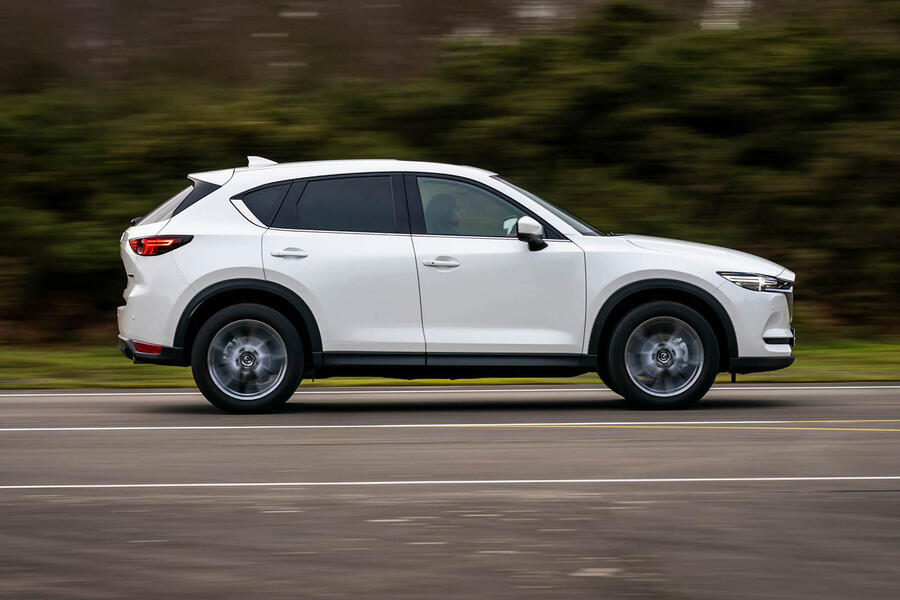
What's it like?
The most notable addition is that new ‘flagship’ engine to sit atop the powertrain range. It’s Mazda’s 191bhp 2.5-litre Skyactiv-G four cylinder petrol engine, first seen in the UK on the Mazda 6 saloon and which bucks industry trends by being devoid of even the merest wisp of electrification (you’ll need the mild-hybrid CX-30 or electric MX-30 for that).
The unit isn’t entirely without some tricks to increase efficiency, though: it features cylinder deactivation technology to automatically switch between two and four cylinders, contributing towards an official WLTP fuel economy figure of 35.3mpg. While that’s far below the inflated official figures of some hybrids – and, as a result, without their favourable tax bands – it is a figure you can actually get close to in the real world.
The engine is refreshingly responsive, offering a useful slug of power that helps offset the not inconsiderable SUV heft of the CX-5. Without any electric boost there’s no engine-free running from start-up, but while that does make for a modicum less refinement, the payoff is the surprisingly pleasant roar of the Skyactiv-G unit. Once up to speed it doesn’t lack for refinement or response compared with class rivals, and if you select Sport mode it offers a pleasing soundtrack. And, happily, the unit doesn’t affect the CX-5’s positive handling and driving dynamics.
The rest of the engine line-up remains, including the front-drive 2.0 Skyactiv-G petrol unit and two different outputs of the Skyactiv-D diesel.


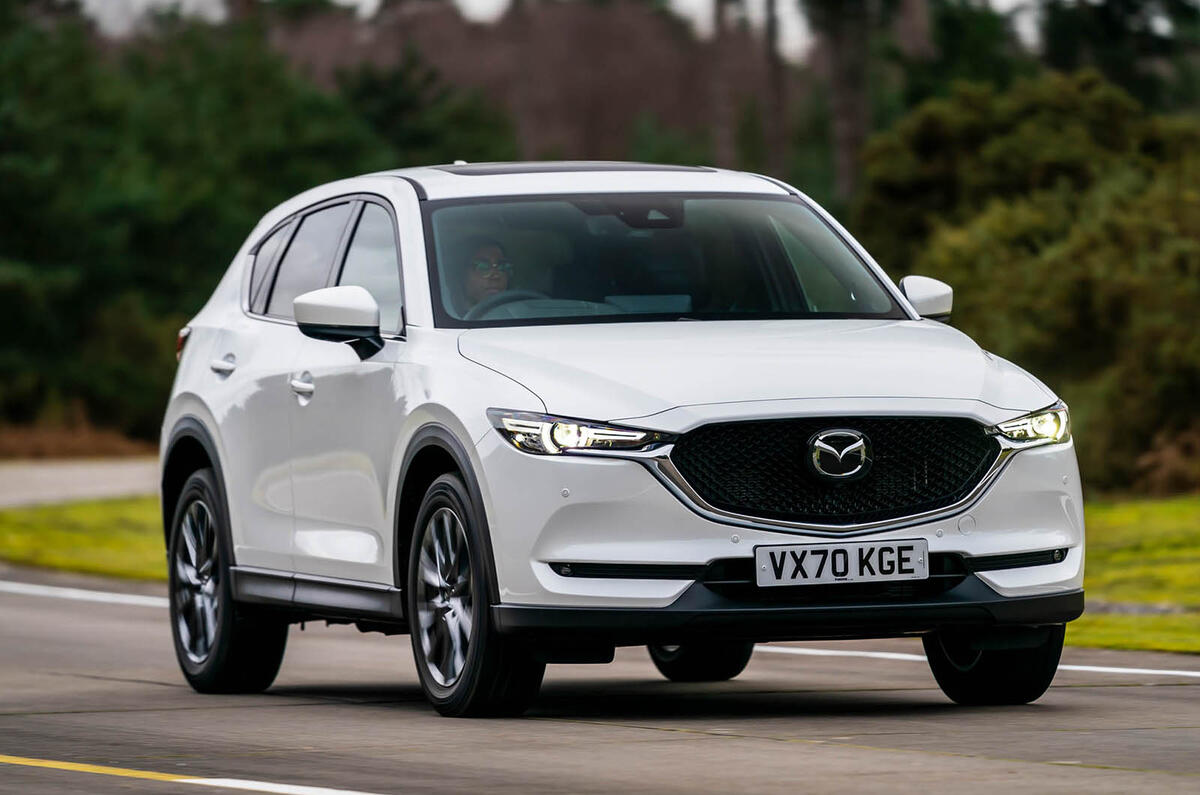
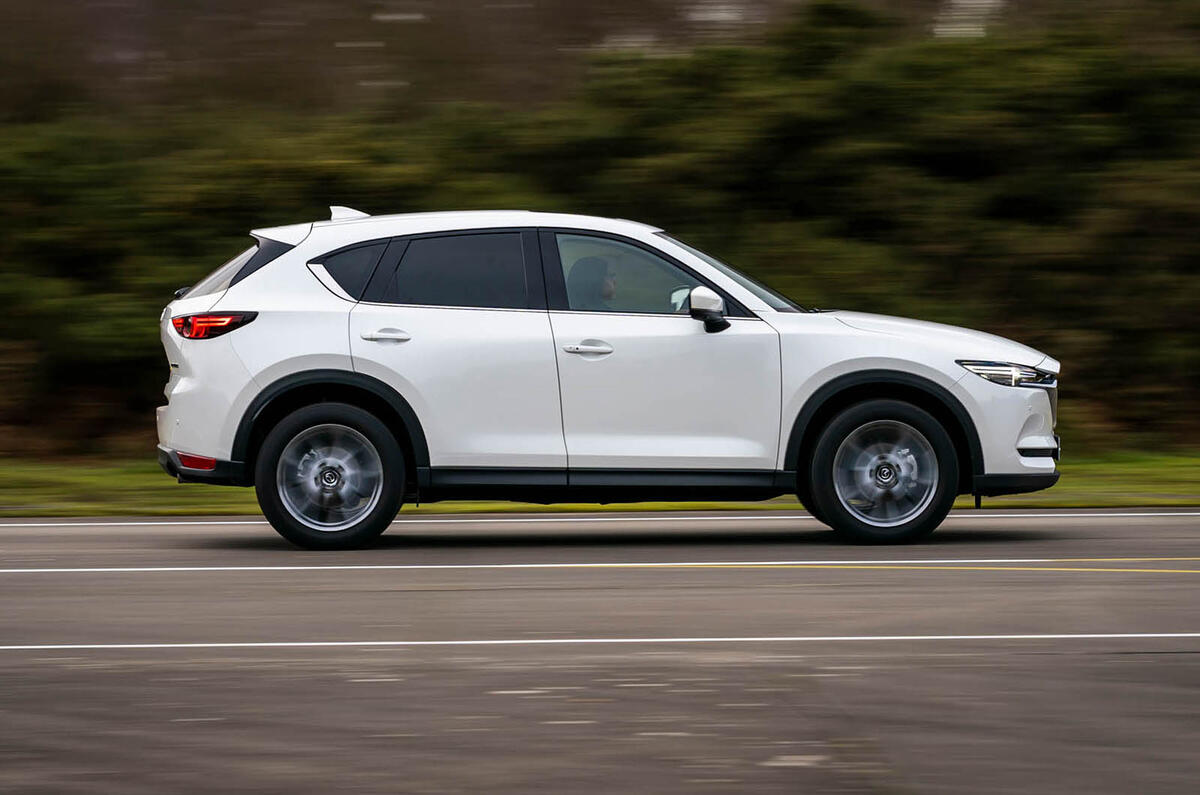
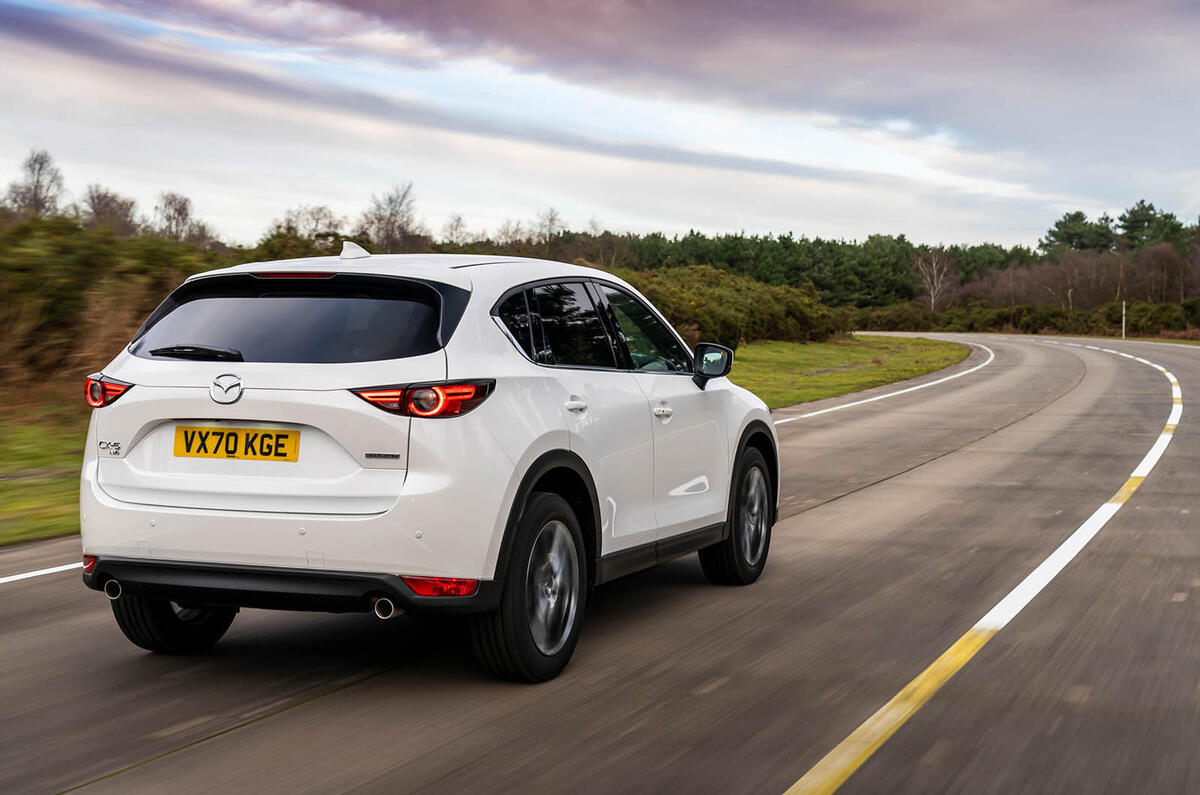
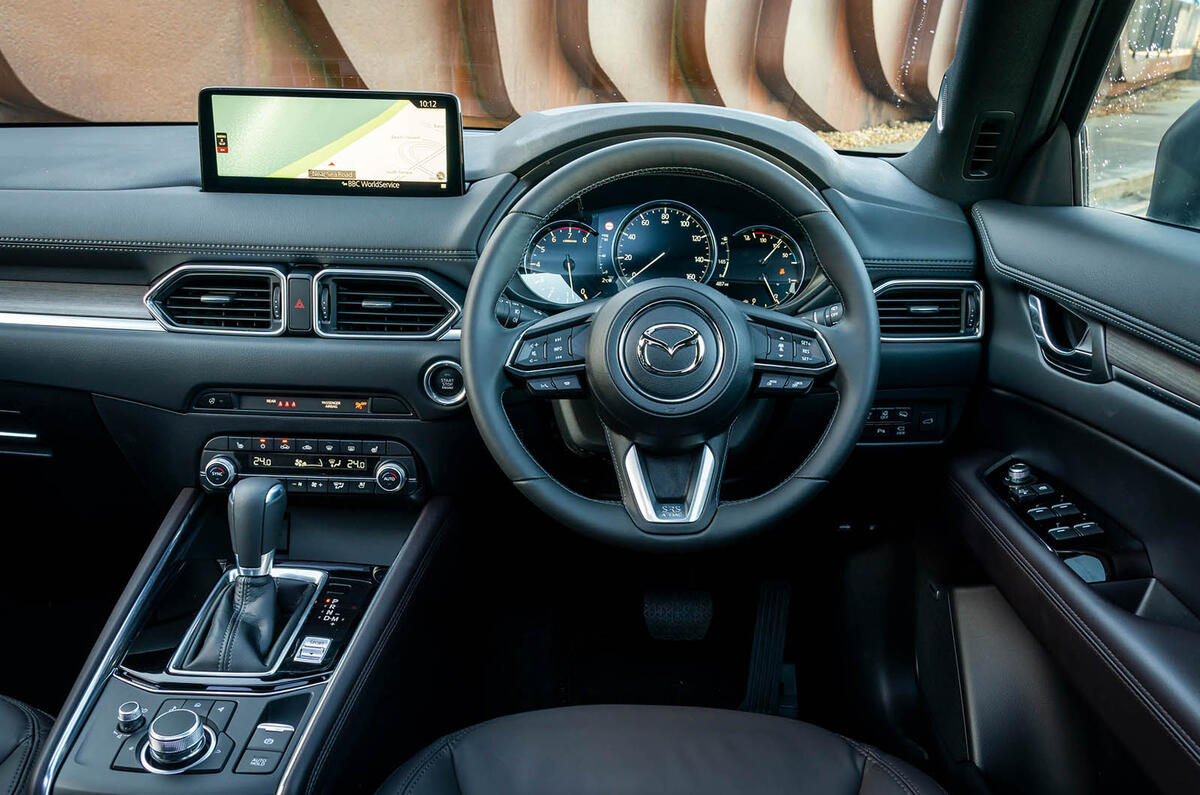
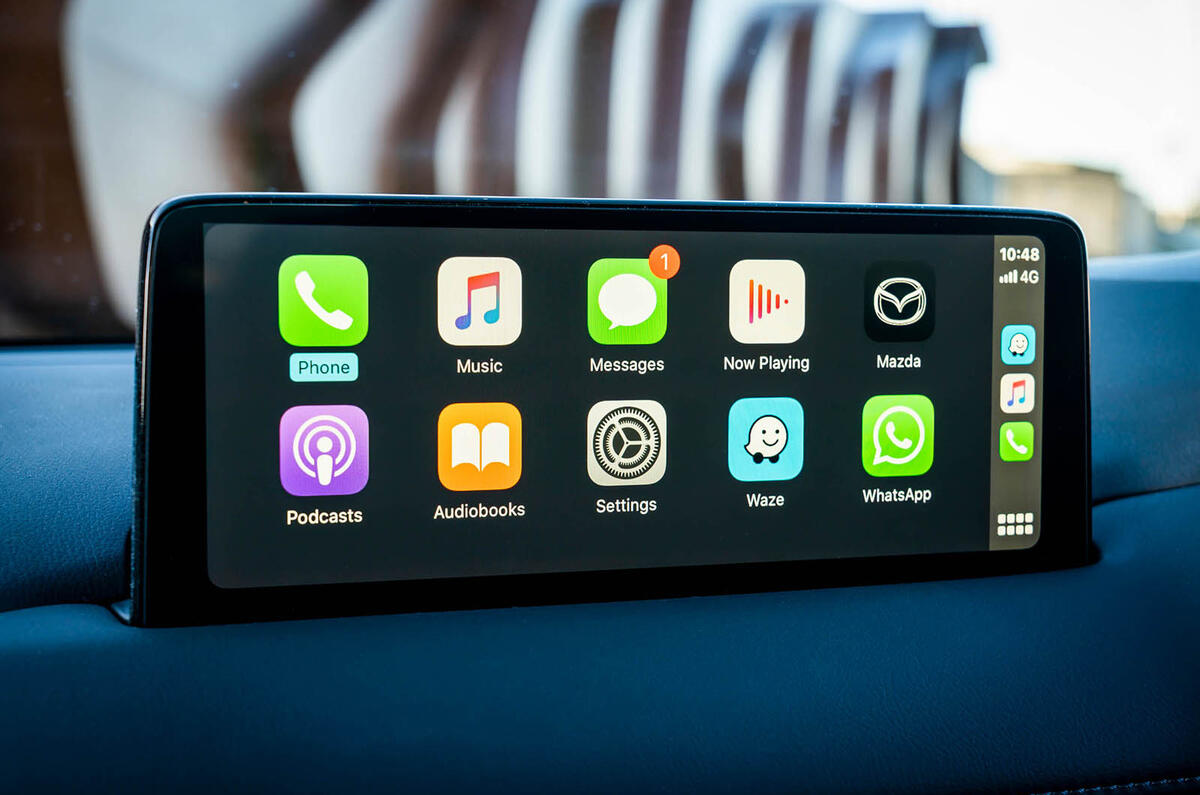

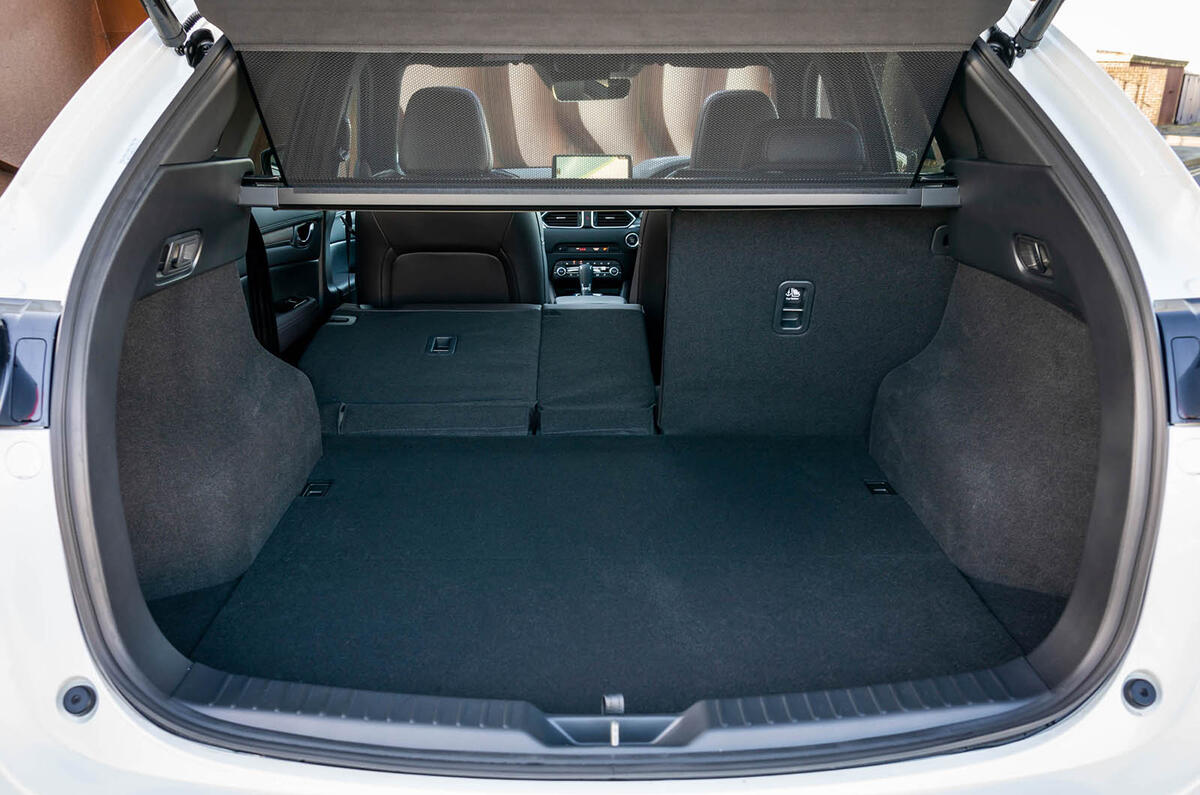
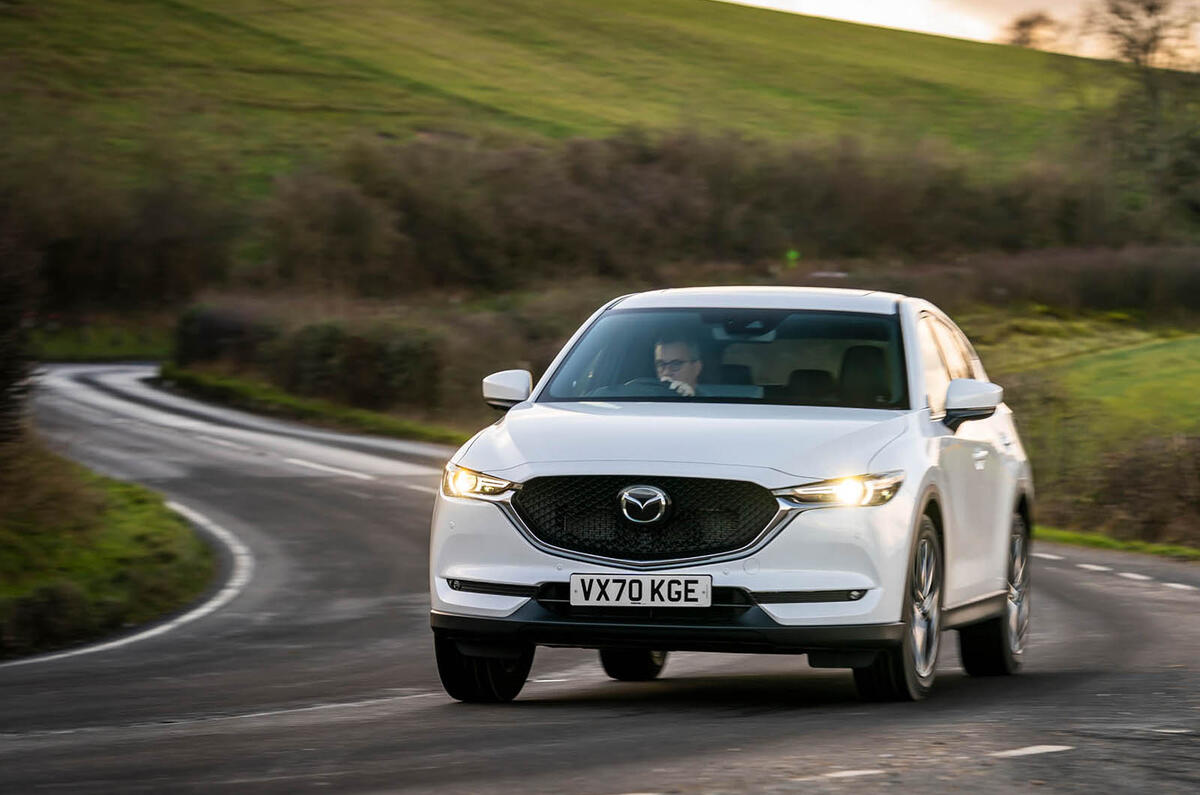

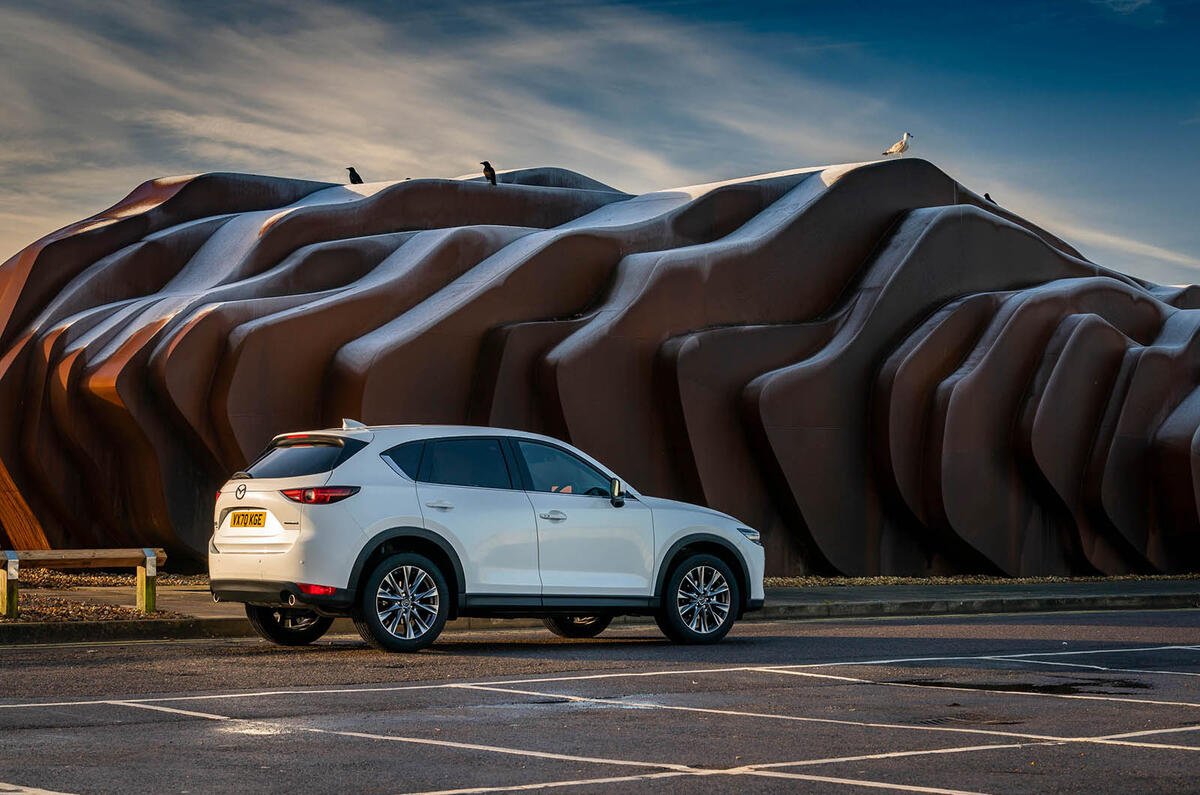





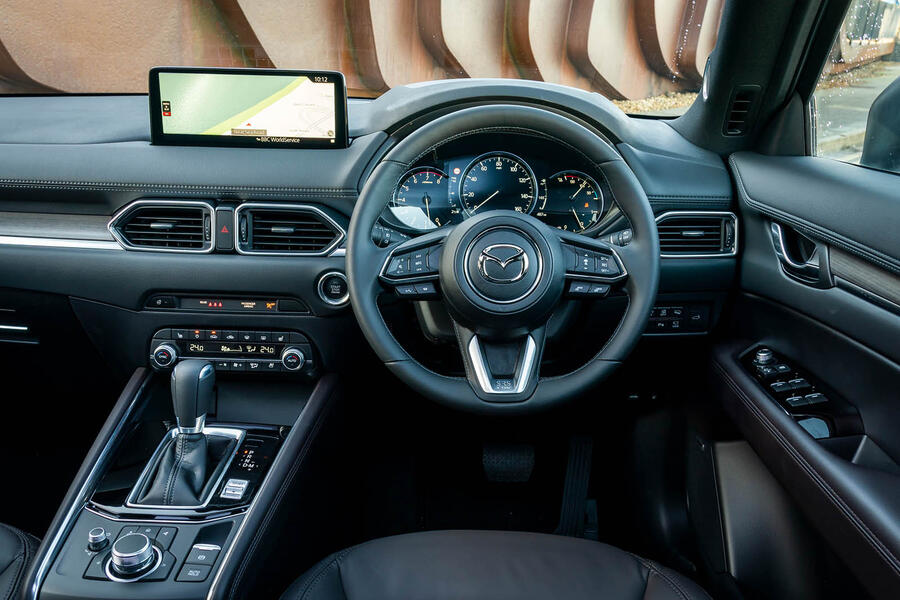
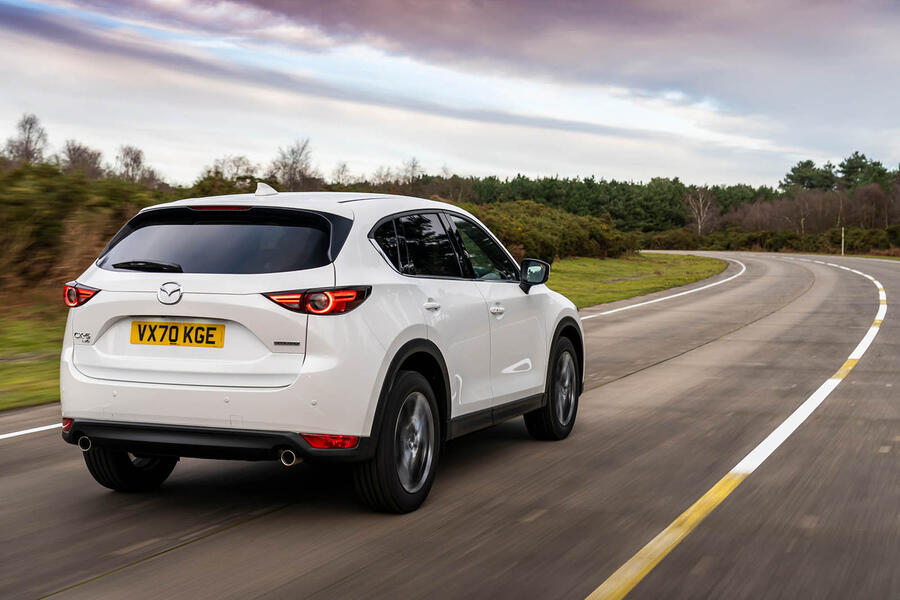

Join the debate
Add your comment
Not great on paper, no torque and what there is is at 4000, 35 mpg at best, 182g/kg is best kept quiet too, for 37k the 0-60 time is a bit behind the opposition. On the plus side inside is great but would love it to have a 2 litre turbo rather than an sky inactive engine.
Those figures aren't very good for a 'new' 2.5 litre petrol are they? 191bhp and 190lb/ft are nearly matched by the BMW X1 20i petrol (itself a detuned version of the 30i motor) that also betters the Mazdas official mpg and CO2.
I like the cylinder de-activation idea if it is well managed, but other than that I see little to be giving four stars for.
Shame you can't look past your own prejudice. Performance and efficiency is what matters, not arbitrary views on engine displacement. I'd have one of these over an X3 any day of the week - much more interesting and, yes, a lot better looking too.
Indeed, and both are pretty awful here. I like the CX5 in theory, but this is very slow and uncompetitively thirsty.
I say fair play to Mazda for not going down the fad touchscreen route. There dial is much safer than some fiddly touchscreen.
Not sure I agree that manual would result in more sales. These kinda of cars are loved for their ease of use, which is why auto is king. Sure, it might put some off, but I would say for the market Mazda is looking at, it wouldn't be worth the engineering to do for the small number of sales they may get.
Agree on the screen stuff. I haven't got an issue with touch screens as much as some, but to have a controller to use on the move is easier for sure